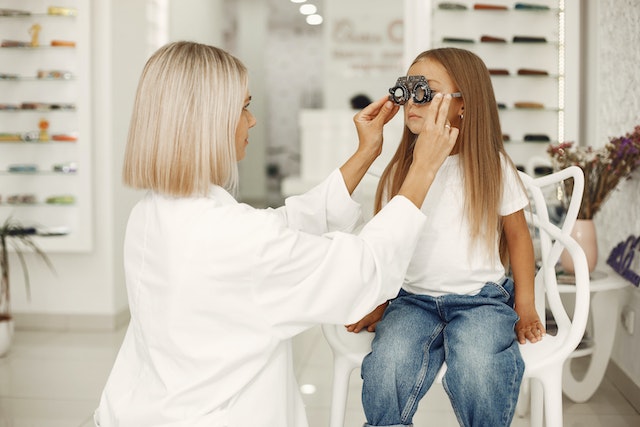Twitter has turned out to be one of the crucial widespread social networks in the intervening time. Twitter appeared that two years in the past, issues had been going very badly for him, however, he has managed to re-emerge and turn out to be an extensively used possibility everywhere in the world. It’s particularly fascinating to comply with the information and all the things that occur on the planet, along with having the ability to debate or comply with firms or applications. Many individuals open an account on Twitter and search to be widespread in the social community.
Though you will need to contemplate various points. In this approach, by following a sequence of straightforward ideas, we will buy Twitter followers in the UK. Listed here are various ideas and tips that can make it easier to in order that your social networking account features reputation.
Full profile
Our Twitter profile is our letter of introduction to the customers who go to it. Due to this fact, you will need to have a very good profile with all the whole info in it. Anybody who enters our profile must be clear about what we wish or what we’ve got to supply on our account on this social community. Chances are you’ll be an organization, need to share information, need to promote one thing, share a narrative, or be an artist trying to make yourself identified. The chances are many on this path. However, the identical objective should at all times be fulfilled.
Clear profile:
Your Twitter profile ought to make it clear to anybody who visits why you might have it. What’s extra, we’ve got to fill in all the data with the identical kind of so we have to enter a profile image, firm identify or ours, in addition to some contact info, like an internet site or an electronic mail. In this manner, we are going to convey a way more skilled picture to the individuals who go to our account. The topic of the picture is necessary as a result of customers wanting a face. They don’t wish to comply with a profile and not use a picture. Arlin Jordin Washington
Hold your account energetic.
As we’ve got briefly talked about earlier, it’s important that we hold our Twitter account energetic. Due to this fact, we might want to put up new content material with some frequency. Having our account energetic always is necessary in order that individuals who comply with us don’t cease following us and in addition to having the ability to attain new customers in the social community. Even though we’re unable to share something in it.
The truth that we hold the profile up-to-date will make individuals who enter it cease to learn what we write. So if there’s something that pursues them, they’ll keep and perhaps comply with us. However, the content material that we’ll generate should be of high quality and associated with our exercise. These are two points that appear apparent, however, in lots of circumstances, the error is made in that they don’t seem to be taken under consideration.
Content material
The content material we share on Twitter should be significant and associated to our exercise on the social community. Because of them, we’ve got to indicate that we’ve got one thing to supply individuals or one thing fascinating to say, relying on the target of your profile. It’s subsequently necessary that we at all times keep a transparent degree and magnificence when sharing content material on it. It will give a very good picture to the individuals who go to the profile.
Along with posting content material, we should not neglect to reply to different messages that they write to us, in public or personal, and work together with different accounts. You might want to keep up a correspondence with individuals, particularly if they’re those who contacted us in the first place. As it will make them occupied with our Twitter account, Along with broadcasting a very good picture always,
Hashtags
Now we have already talked about what we write on Twitter should be associated with our exercise or what we need to obtain utilizing this profile on the social community. Coherence and consistency are two points of significant significance. In this sense, we should keep in mind these always. That is much more necessary when you’ve got a knowledgeable profile or need to promote an enterprise.
As you already know, within the tweets we put up on the social community, hashtags can be utilized within the messages we share. That is one thing that may be very helpful to generate curiosity in our profile since on Twitter individuals can seek a selected hashtag. So they’ll find themselves on our profile by way of this search. It is a solution to get followers organically.
Hashtags on the social community
We are able to use numerous hashtags in the social community, however, we should make a choice. We can’t put on simply something, just because it’s widespread or modern at a sure time. Since it will create the sensation that we’re an annoying account, it won’t play in our favor. It’s important to select and see which hashtags we are able to use in our tweets.
So use those which might be associated with your profile or exercise in order that they assist our posts to be coherent. Additionally, we should always not use too many phrases in an identical message. Twitter will contemplate us as spam accounts if we use too many in identical messages. Utilizing a few of them or utilizing some however not in some messages is an effective solution to attain new audiences in the social community.
Hours to spend on Twitter
One thing we are going to study over time is that there are particular hours that might be finest for posting content material on Twitter. The social community often has a number of peaks of exercise all through the day, which is variable relying on the day of the week or the nation. However, having this info will assist us. From there, we are going to select one of the best times to put up one thing on the social community.
What can we see on Twitter?
That is one thing we are able to get on the Web, the place there may be often loads of information on it. However, we are able to additionally see it whereas utilizing Twitter. That needs to be true. We discover that there are tweets that we dangle at a sure time that have a larger response than others. So we are able to schedule the posts to be uploaded in a day primarily based on these peaks of exercise. Particularly if we use hashtags in them.
There are often some widespread peaks of exercise, resembling 5 or 8 pm. Moments in which there are plenty of exercises, though you must test it yourself as a result of it don’t at all times coincide with the sharing of your Twitter followers. However, it will assist us to have a way more environment-friendly and well-oriented profile to realize followers.
Observe customers we need to comply with.
There are at all times Twitter accounts or profiles that we discover fascinating. Both due to the content material they share, or as a result of they may help us with totally different initiatives. In these circumstances, we need to appeal to the eye of those individuals and thus make them comply with us on social networks. However, we are able to take step one in these conditions very simply. And on this approach, it’s we who comply first.
It could appear insignificant, though it could be helpful for these individuals to grasp our existence. They’ll see that we comply with them, and they’ll seemingly go to our profile, which can generate curiosity. So it’s potential for them to comply with us and even write to us. Being proactive on Twitter is important; as it can open extra doorways and assist we achieve followers extra simply.
Fascinating Twitter account:
Due to this fact, if there are Twitter accounts that might be fascinating to you, don’t hesitate to comply with them. As well as, it’s seemingly that the followers of those accounts will go to our profile, which can give us the chance to achieve extra individuals on the social community. So the advantages of doing this may be many. Additionally, by the following somebody on a social networking website, we won’t miss something.
Purchase followers
If you wish to get Twitter followers rapidly and without problems, then you’ll be able to at all times use to buy Twitter followers in the UK from BestFollowers. One thing has gained a reputation in many profiles of firms and well-known individuals, though there are also some adverse points that we should always not neglect. Arlin Jordin Washington
Shopping for followers
Shopping for followers will give us numerous accounts that can comply with our profile. Though in lots of circumstances, they’re empty profiles without photographs, and so they often wouldn’t have any exercise. So, though they’re listed as our followers, there will probably be no interplay with them. They received our tweets or retreats. One thing that’s clearly not a very good factor, is since a high-quality follower has interplay with an account.
So these individuals won’t give us something at any time. And this isn’t one thing we wish, nor are we occupied with having energetic followers who will like or share all the things we do on Twitter, in a approach that helps us generate exercise. Additionally, there are at present web sites that present the variety of faux followers a profile has, so if somebody checks it, it may well make us look dangerous.











